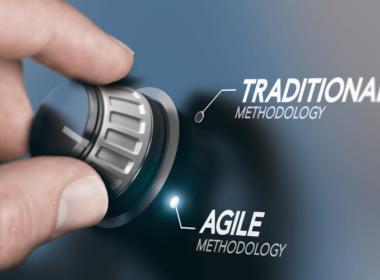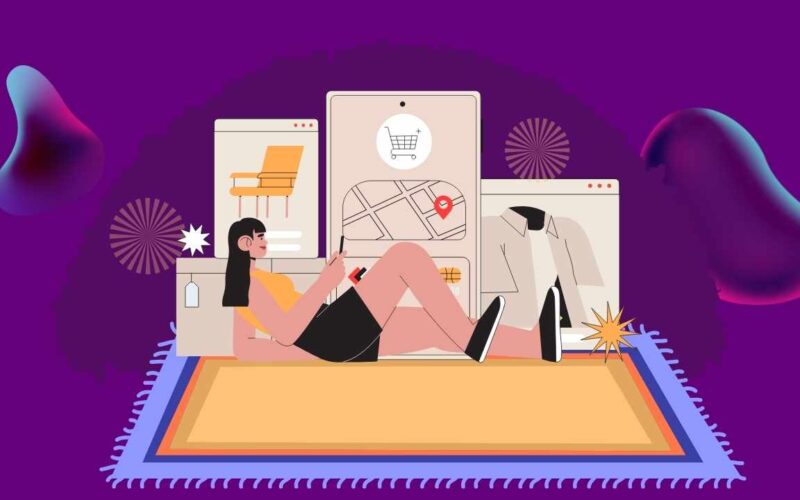Legacy systems be it mainframe assets, or outdated business processes or erratic application interfaces are no longer welcome in the developers or entrepreneurs community. The rise of new technologies and software development methodologies, agile practices, testing approaches have evolved into systems that enable rapid development of softwares and applications. These apps are high performing, scalable, and robust, and facilitates faster innovation. A research concluded that the biggest barrier to developer productivity is maintaining legacy softwares. Technically, outdated software architectures like monolithic and tightly coupled software systems are what is referred to as legacy systems. But a simpler definition that I personally like is “Legacy systems are any software design systems or infrastructures that become a barrier to growth, a bottleneck”. And Legacy modernization is overcoming these barriers to growth by upgrading your infrastructure and software stack in a way that it boosts operational efficiencies, facilitates innovation, imparts agility, and delivers greater value.
Why do you need to upgrade your legacy systems? The need for legacy modernization!
Though, each legacy modernisation project is unique with a specific set of desired outcomes. But broadly speaking, legacy modernisation efforts are aimed at-
1. Removing technological constraints to agility, innovation, and growth. Legacy systems were not built for live streams of data flowing in 247 from across boundaries.
2. Upgrading tech stack to embrace emerging technologies & trends. Enhance interoperability, integration with new technologies & services. You don’t want to be defamed and identified with tags like “downtime”.
3. Deliver smooth and engaging customer experiences, outperforming users’ expectations. You don’t need to be the last to the market.
4. Reduced costs, fix revenue leakages in inefficient operations. Optimized existing revenue & profit streams, identify and tap into new growth streams.
5. Bolster security, resilience, and compliance with new evolving regulations for web2 and web3. You can no longer afford to be a defaulter. Replying to unnecessary notices and legal issues is a productivity killer.
6. To stay ahead of competition, and avoid becoming irrelevant in the market.
Legacy system modernisation – solve people, process, and tech
If you do not want to be among the 50% of the companies which are set to be replaced in the next 10 years, you need to modernize your infrastructure, minimize missed opportunities, and maximize efficiency. And legacy modernisation is a step towards the same. For a successful legacy modernization you need to align three things right- people, process, technology. It starts with people (or partners).
People & processes
There should be a buy-in from the top to bottom management about the need for legacy modernisation of your technological properties.
Next, of course, there should be proper allocation of budget for the same.
People within the organization need to be open towards learning and adapting to new technologies and processes. For instance, Agile, Scrum, DevSecOps tools & technologies. At the same time they should let go or strip inefficient processes.
There should be high-level clarity within the team on all the ongoing organization-wide modernization initiatives, be it using a migration tool, or re-writing the entire solution in a new-age tech.
Technology trends for the legacy modernization
Cloud – for better scalability, cost savings, agility (run any software, any time, anywhere), high performance, improved uptime. Of course, you need to do it right in the cloud, else mishaps could be disastrous. For example, if you’re building in AWS – here are the best practices.
DevSecOps – to streamline and automate processes and make security a shared responsibility. Write, design, and develop softwares which is secure from the very beginning. DevSecOps frees up time for your think-tank to come up with new and innovative strategies to hack growth.
Automation, AI, and Data – Automating certain aspects of your business which do not need cognitive thinking is a good idea. You achieve this by harnessing AI/ML/Data/Automation. For instance, RPA in customer success, predictive maintenance of machines in the computer hardwares industry or in the manufacturing plants or automated transportation systems, identifying flawed transactions in a financial org, or auto verifying a insurance damage claim can all deliver a lot of value in terms of efficiency, speed, and experience for both companies and their users.
Omnichannel – Only mobile is a legacy as well in 2022. Various organizations, esp in the retail and finance, education, and fmcg sector today needs omnichannel strategy – be where your users are!
To summarize, legacy modernisation in terms of technology, often means embracing distributed systems, serverless technologies, microservices architecture, building in the cloud, building for the edge, harnessing the capabilities of AI & ML, adopting mobile-first strategy, going omnichannel, and choosing modern databases and development technologies for mobile & web. A rising trend has been to develop for the decentralized web.
Factors to consider for legacy modernisation
1. Compatibility of new technologies and platforms with overall existing organizational technologies. Evaluating this could give you a fair understanding of the efforts that would be required for revamping your legacy systems. Efforts would include training your existing workforce, and new hirings.
2. Finance factors: The fuel of any business is ultimately revenue. It makes sense to assess ROI on your legacy modernization efforts. A fair analysis of the costs involved in managing legacy systems vs the costs of modernizing it would better position you to call decisions. Do a holistic evaluation of all the factors involved including available budget, and the new growth opportunities that might arise post modernization.
3. Can you modernize a section of your legacy system to evaluate ROIs or to enable incremental upgradation?
4. What are the risks involved? Would you be able to abide by compliance rules while operating in the cloud? Re-engineering legacy systems could often translate into a lot of downtimes and rough experiences for your customers, and your team as well. Evaluate the risks, before you take the leap. This is where an experienced partner comes in handy. Feel free to reach out to Codewave’s consultants anytime.
5. Lastly, what’s your strategy post modernization?
Legacy modernisation approaches:
Encapsulation – makes use of APIs, minimal interference with existing codebase or environment.
Rehosting – One of the fastest approaches to legacy modernization. You don’t make any changes in the legacy system. Instead you lift it, and shift it to a new environment ( which mostly is cloud, but can be on-premises as well). Here, you often make use of emulators. For example, COBOL mainframe emulator for windows.
Replatform – Like rehosting, you lift and shift the code but only a component of the legacy system. This needs minimal code changes, but no structural or functional changes. For example, move a COBOL system to a UNIX or WINDOWS environment.
Refactor – This involves restructuring parts of your legacy system and optimizing its codebase to gain better performance, without disrupting its overall functionality. The aim of refactoring is to open the actual modernization gates without code freezes, to facilitate ongoing progressive improvements to legacy systems. For example, refactoring an entire COBOL component into Java, and hosting it in AWS to allow this legacy component to integrate with a suit of cloud services including databases.
Rearchitect – Making significant enhancements to the component, and redesigning with new architectural paradigms to make use of enhanced capabilities.
Rebuild – building the functionalities from scratch with modern agile technologies. But at the same time, it keeps intact the overall scope and specifications of the target legacy system under modernisation.
Replace – This approach is like completely substituting the legacy system with a modern system developed keeping in view the old needs, the present needs, and the needs that may arise in future endeavors.
Conclusion –
90% of enterprises are having legacy systems as a bottleneck to growth. But with proper strategy and resource planning, you can change these obstacles into opportunities. If you are overwhelmed with the 7 modernization approaches, no need to panic. It’s understandable. Too many options could be confusing, and often clouds your decision making abilities. If you’re facing issues in evaluating your preferred legacy modernization approach, feel free to reach out to our consultants to draw out a compatible roadmap for you. We’ve been part of 300+ digital transformation projects over the past decade, and have a rich reliable talent to help you out in making the move towards the cloud.
FAQ
What are the benefits of IT Modernisation?
To list the benefits:
- Cost reduction
- Enterprise agility, resilience
- High performing scalable tech
- Robust security, and improved compliance
- Faster innovation








